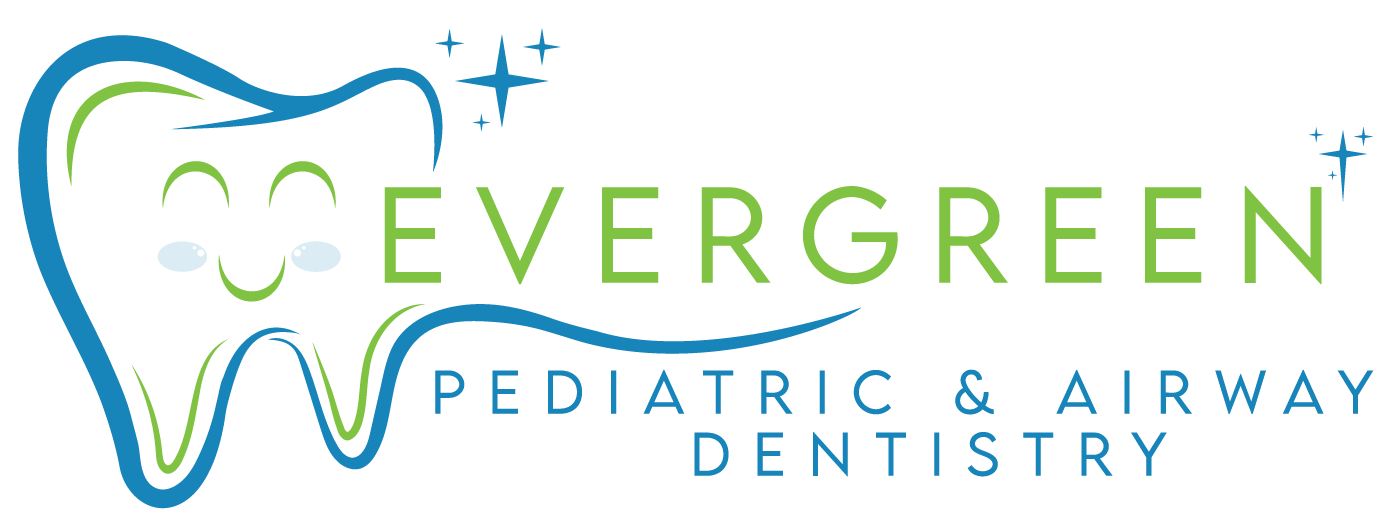SPECIAL OFFER
Take Advantage of Our $99 New Patient Exam, Cleaning, & X-rays
Airway Dentistry is a specialized field of dentistry that focuses on assessing and managing the airway-related issues in children. It involves the evaluation, diagnosis, and treatment of various conditions that affect the upper respiratory tract and oral cavity, with a particular emphasis on how they may impact a child’s breathing and overall health.
The airway plays a crucial role in breathing, and any abnormalities or obstructions in the airway can lead to significant health problems, especially in children. Pediatric airway dentistry aims to identify and address these issues early on to ensure proper growth, development, and overall well-being of the child.
Some common conditions that pediatric airway dentistry addresses include:
- Sleep-Disordered Breathing: This encompasses a range of conditions, such as snoring, obstructive sleep apnea (OSA), mouth breathing, and other sleep-related breathing disorders. These issues can often be related to structural problems in the oral cavity, such as enlarged tonsils, adenoids, or dental malocclusions, which can obstruct the airway during sleep.
- Facial and Jaw Growth Abnormalities: Pediatric dentists specializing in airway dentistry assess the growth and development of the face, jaws, and teeth. They examine for any issues that may impact the airway, such as skeletal discrepancies, narrow dental arches, or malocclusions. Addressing these problems early can help optimize the child’s airway space and prevent potential breathing difficulties.
- Tongue-Tie (Ankyloglossia): Tongue-tie is a condition in which the tongue’s movement is restricted due to an abnormally short or tight lingual frenulum. It can affect breastfeeding, speech development, and potentially compromise the airway. Pediatric airway dentists may evaluate and perform frenectomy procedures to release the tongue-tie and improve overall oral function.
- Temporomandibular Joint (TMJ) Disorders: TMJ disorders can occur in children and cause pain, discomfort, and difficulty in jaw movement. These issues can influence the position and function of the lower jaw, potentially impacting the airway. Pediatric airway dentists may diagnose and provide appropriate management strategies for TMJ disorders.
Pediatric airway dentistry involves a multidisciplinary approach, often collaborating with other healthcare professionals such as pediatricians, otolaryngologists (ear, nose, and throat specialists), orthodontists, and speech therapists. Treatment options may include orthodontic interventions, oral appliances, myofunctional therapy, or referral for surgical interventions, depending on the specific needs of the child.
By addressing airway-related concerns at an early stage, pediatric airway dentistry aims to optimize the child’s breathing, promote healthy growth and development, enhance overall health outcomes, and potentially prevent long-term complications.
Happy Kids
Read Why Our Patients Love Us
“I took my daughter to Evergreen Pediatric & Airway Dentistry twice and had very good experience. Dr. Susan Kim and her assistants are super patient and nice to children. They explained to my daughter how the appliances work by personification. For example, the brush is Mr. Itchy and the straw which sucks water is Mr. Thirsty. They make sure that my daughter understands everything and is well prepared before operating, so that she won’t be afraid. And they gave her toys and stickers as a reward every time. My daughter said she liked this dentistry and I do recommend it to those who have children. Most importantly, for any procedures they would take to my kid, they show much considerations to double confirm how much the cost are covered by insurance provider to get a final reasonable treatment plan with the least cost. Very professional and patients friendly. Solid 5 star recommendation.”
– Infinity HY
“Dr. Susan and her staff are always so friendly, gentle and patient. They put my 4 kiddos right at easy for their cleanings. The office is spotless and I see great care taken in cleanliness and proper infection control. We’ve been patients for 8 years and proudly recommend this office.”
– Erin Lysaght
“Dr. Susan Kim and the staff at Evergreen Pediatric & Airway Dentistry are phenomenal. Dr. Susan is extremely knowledgable, patient and kind. My kids love going to the dentist because she engages with them, answering their questions and explaining things in kid terminology. You can tell she treats her staff with the same kindness as her patients which is also very important to me.”
– Michelle Chattin
“Dr. Susan Kim and the staff were amazing. My three year old had to get his tooth extracted and they made sure my son felt safe during the whole procedure. He didnt even cry once. I realized I didnt have to worry so much. Thank you so much Dr. Kim and co.”
– Sunah Park
“Dr Kim and staff are great at making children feel comfortable. My two-year-old daughter actually looked like she enjoyed the experience, which is saying something when you’re going to the dentist. I would highly recommend.”
– JD Sullivan
“Dr. Susan is an excellent dentist and her assistants are super nice and very caring with kids. They are always very pleasant and make my kids feel very comfortable. We love them all!”
– Karla Armendariz
“We just had our first “happy visit” and it was a dream. Our toddler has grown fearful of anything involving medical care. This is the third dentist we tried and it really was the charm! I was completely blown away by how warm, patient, and understanding they were. They put in all the effort to make things as fun and relaxed as possible and didn’t rush the process one bit. 5 stars aren’t near enough.”
– Jill B
“We have had Many appointments for our infant son between pediatrician, pediatric dentist and postpartum for his first few weeks of life. We have been by far the most impressed with Evergreen Pediatric & Airway Dentistry We really can’t say enough good things about them. They are all so friendly and make the whole process seamless! We HIGHLY recommend them!”
– Lori Healow
“My two boys love Dr. Susan and her team! They are very professional, kind and caring. I feel very lucky that Evergreen Pediatric & Airway Dentistry takes care of my children’s health and well-being.”
– Stephanie Hartmann
“Always great experience with Dr Kim! My kids have been coming here since 2015 and every time it is a diligent care with attention and ready to answer any questions. We love Dr Susan!!”
– Maria Stepanyuk
Common Questions About Sedation Options
Does sedation dentistry work for most children?
Yes, our dental sedation will work for most kids. We offer two options because we understand that different children will respond better to different sedation methods. We’ll go over the details of both options and help you decide which one will work better for your child’s situation and specific needs.
Are your sedation options safe?
Yes, we only use safe, time-tested sedation options at Evergreen Pediatric & Airway Dentistry. Laughing gas, or inhaled sedation, is mild and gentle enough that it is completely safe to use for kids. For more intense dental anxiety or if your child is simply unable to sit comfortably through their exam or procedure, we also offer general anesthesia administered by a medical anesthesiologist.
How long does dental sedation last?
The length of the sedative effect varies, depending on the type of sedation used. For laughing gas, your child will inhale the gas through a mask worn over their nose. It wears off quickly when the mask is removed and they won’t feel groggy afterward. In contrast, they may feel the effects of general anesthesia for several hours after their procedure.
Is dental sedation covered by insurance?
Dental sedation for certain procedures is at least partially covered by many insurance plans. You will need to talk to your dental insurance provider to find out more about your child’s specific coverage. We will be happy to assist you further in figuring out the most affordable way to maximize your child’s comfort with dental sedation.


